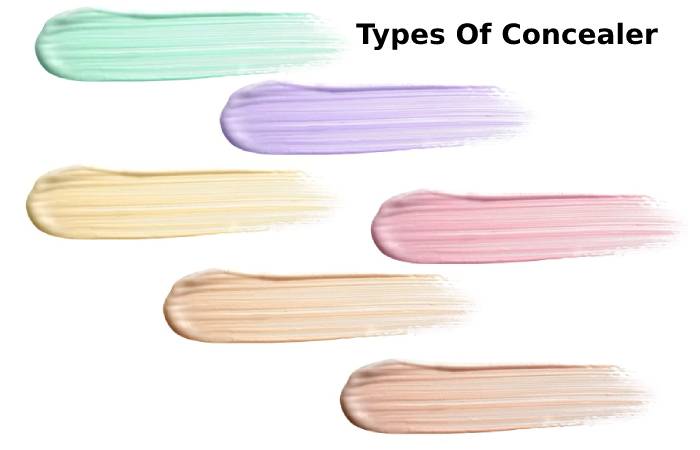Table of Contents
About
Concealer For Dry Skin – Concealer is essential concerning makeup. It has become very common for makeup. It kind of element is the concealer, which is applied before the makeup, so the stains are hidden from the acne. There is nothing like makeup correctors to hide minor imperfections such as pimples, blemishes, and dark circles. But do you know which color of concealer to apply for each problem? We tell you, And we discover what the best-selling color corrector palette is. Corrective makeup is your ally in hiding imperfections. You will find different formats, although the fluid textures with high coverage are the most suitable if you want a natural result without accentuating marks or wrinkles. In addition to the classic beige concealer that we use to hide all kinds of imperfections, other colors help correct the pigmentation of dark circles and puffiness, darker spots, pimples, or redness…
Types Of Concealer
- Beige Concealer. The beige corrector is the basic multipurpose, neutralizing most of the skin’s spots. It is advisable to choose a tone lighter than our skin for areas.
- White Concealer. The white corrector is used to give light and volume, so it must be avoided in areas such as dark circles so as not to accentuate them.
- Yellow concealer. The yellow corrector helps hide violet tones such as dark circles or purple spots and blackheads.
- Green checker. The green corrector is used to correct the redness of the skin, whether they are blemishes, pimples, marks, scars, or rosacea.
- Purple concealer. Anti-glare is used to counteract yellow areas, for example, in skins that tend to this tone.
- Pink Concealer. The pink corrector neutralizes the green tones, for example, little veins that are greenish.
- Orange Corrector: The orange corrector hides marked and bluish dark circles and blemishes. Brown or bluish moles or markings.
Tips To Correct Imperfections
Brands. The fluid textures are natural and do not mark wrinkles. For example, if you have a marked rictus, the line that joins the nose with the lips, and you want to hide it, apply a highlighter next to the nose and along the furrow to neutralize the shadow that the sinking produces.
Grain. Regarding the pimples, nothing can be done against the relief, but the redness can be concealed with a correction pencil of the same color as the skin. Some include antibacterial and keratolytic agents (such as salicylic acid) that dry out the pimple and heal it.
Baggy eyes. You can apply a concealer for dark circles a shade lighter than makeup and with yellow pigments. If the result is grayish, the chosen tone is too soft, and if it is yellowish, it is too dark. It is best to blend it with your finger.
Tired sight. Following the same line, it is best to apply a liquid illuminator in the eye socket to hide tryout eyesight. In addition, the pearly shadows in the tear duct and at the end of the eyebrows brighten the look.
Stains and redness. But if your most significant complication is small spots on the skin and redness, you should follow the same guidelines for pimples. We will cover the diffuse areas with a compact corrector with great coverage that can be apply with a sponge.
Fluid, stick, creamy, colored concealers… Find out which one is best for your skin type and cover imperfections like a professional
Method of Color Correctors Are Apply
Do not mistake applying many products to cover the problem with a thick layer. The best way to use a liquid or creamy concealer is with a brush or sponge (some come with an applicator) and tapping with your fingers to remove the excess without dragging.
Concealer Is Very Important For Make-Up
It is one of the essential makeup products in the bag and one that we can get supplementary out of. Because we use concealer to rawhide blemishes, expand tone, highlight features and illuminate, among other uses. And it is probably one of the most challenging products to catch tailored to the skin and needs of each one. Let’s face it, finding the faultless concealer is no easy assignment.
Sometimes it cracks under the eyes, collects in the folds, dries out the skin, doesn’t cover as it should, doesn’t integrate well with the complexion, is too thick or too fluid, doesn’t have the right tone, etc. Thus, sometimes the main problem is not so much finding the proper manner as discovering the format that best integrates with our skin kind and hides our imperfections.
Conclusion
These are usually quite layered products that are hand-me-down for exact areas. However, as they are dense, it is best to seal your polish with powder to control the correction over the hours. The compact powder versions are more proper for contouring work, which is why we usually find them in cases combine with contour makeup. Thus, they are ideal for putting on with a brush and highlighting volumes on the face.

